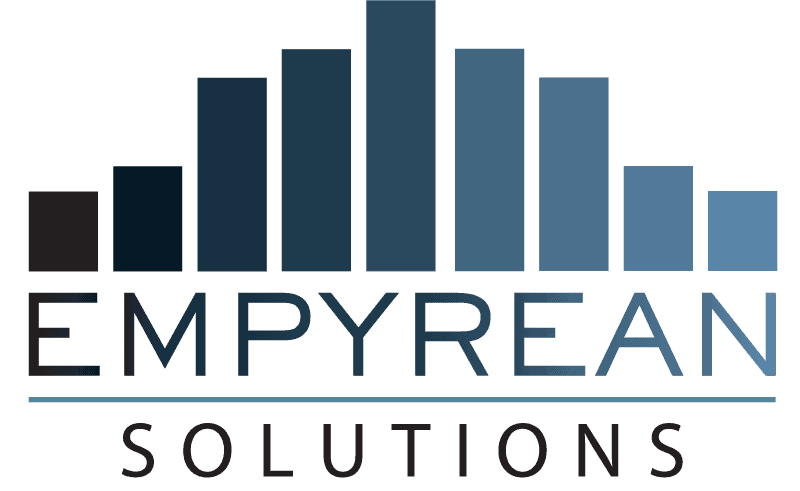Will Newcomer is the director of finance & risk at Empyrean Solutions. He has more than 35 years of experience in risk and finance with major and regional banks as well as leading technology firms, making him uniquely qualified to lead clients to the forefront of integrated finance, risk and compliance solutions.

How to Manage Deposit Risk in the Modern Age
Brought to you by Empyrean Solutions

Customers react to changing markets and create liquidity and credit risk for their banks. Technology innovations simply increase the speed and ease of their transactions. Banks must adopt technology to keep up with customer demands, even if doing so increases the risks they face. Banks performing both top-down and bottom-up risk management have the best understanding of their risk, its sources, and options to manage it.
Top-down measurement, analysis and management of market, liquidity and credit risk has improved significantly since the Great Recession. However, banks continue to perform risk measurement and analysis separately and often myopically, making overall risk management more difficult. The divide of risk measurement and analysis is partially driven by the specialized expertise required by diverse risk disciplines and by continued use of disparate legacy systems versus a fully integrated and automated system. Fully integrated and automated risk systems ingest all data once, compute all scenarios in a single engine, and report the results via a common reporting tool. They also enable comprehensive and near-instantaneous ad hoc scenario modeling, the single best management tool bank executives and boards have for surviving rapidly changing economic conditions.
Recent history shows balance sheet compositions now change in a matter of minutes and hours not days, weeks and months as they did prior to 2009. Many risk managers have never experienced rapidly changing market rates until now. These risk managers should research interest rate and balance sheet composition changes from the 1980s to help develop stress scenarios to apply to current balance sheets. They should increase the speed and magnitude of these scenarios until their balance sheet reaches a breaking point, paying particular attention to hedges and their effectiveness in each scenario. They should investigate mitigation strategies with various derivatives and ensure all combinations and types are being modeled correctly and documented. If there is no written policy and approval process for derivative usage, they should create one that focuses on the derivative’s purpose, making usage transparent, and keeping the policies simple to understand and follow. If you serve on a bank board, educate yourself on derivative policies and how they will help meet the increasing regulatory demand for strong balance sheet management.
Top-down risk management represents one side of the risk management coin; now, let’s look at bottom-up. Risk enters bank balance sheets with every customer originating a new account and continues with their transactions. While both management decisions and market changes can drive banks to fail, customers drive runs on deposits and loan defaults. Risks from customer behaviors must be analyzed, quantified and qualified, and strategies must be developed to keep customers from causing severe or irreparable harm. This level of customer analytics is only possible with a risk adjusted management information system (RAMIS) built at the instrument and transaction level and used across the bank by executives, staff and the front-line.
Front-line relationship managers using the system are key to providing the earliest warning of a gathering storm, especially when equipped with the proper tools. Relationship managers using a RAMIS quickly learn their key customers’ behaviors, transaction patterns and tools, and are among the first to recognize significant changes in them. Just as top-down scenario analytics should be performed with the same discipline and vigor as credit underwriting, so should customer behavior analytics, especially for sophisticated deposit customers. Establishing limit management reporting to quickly identify sudden changes among these customers is critical, given the speed with which they can execute transactions. But don’t just identify and quantify them; create a proactive plan to retain these customers and their balances through a looming crisis.
Early indications of growing crises are very important benefits from a RAMIS, but crises exist in the tips of the curve. A broader benefit of a RAMIS solution is the ability to identify all the profitable and unprofitable customers of the bank. Profitable customers keep the bank open, but also represent the greater risk as they are the most able to move to another bank, instantaneously. It’s also important to identify the customers who lose money and demonstrate how and where money is lost.
The final benefit of a RAMIS is that it enables merging disparate risk measurement and management functions and committees into a single, highly efficient and effective team, which is continuously informed about changing customer behaviors by their front-line managers. Managers quickly gain improved understanding of how one type of risk impacts other risks, and how customers react. Utilizing both top-down and bottom-up RAMIS functionality within a unified process creates the most effective approach for surviving crises and generates the greatest returns to your stakeholders.


